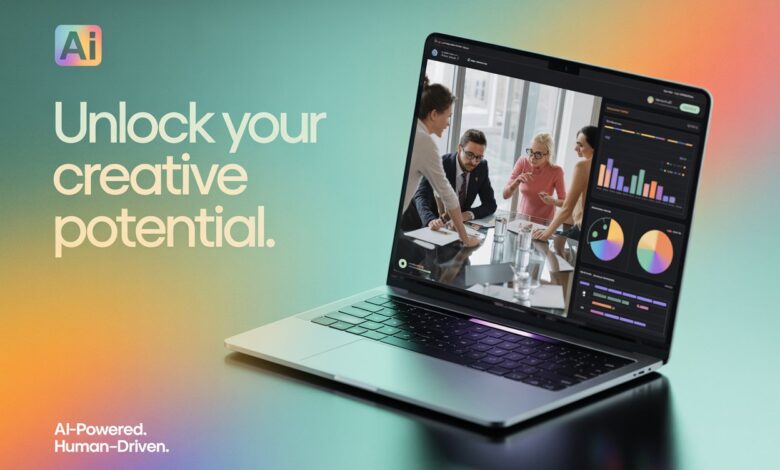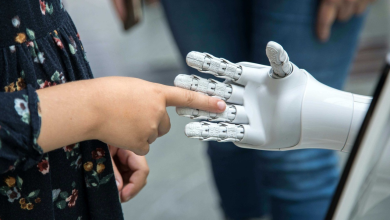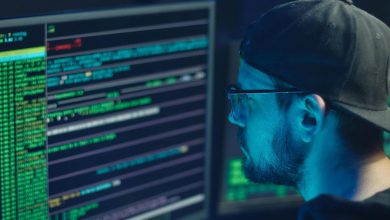
The conversation around artificial intelligence in marketing has evolved far beyond text generation and chatbots. Today’s frontier lies in visual AI—sophisticated systems that create, edit, and optimise images, videos, and interactive experiences at scales previously impossible. For businesses across the United Kingdom and Ireland, this visual revolution presents opportunities to compete globally whilst maintaining the authentic, localised presence that resonates with regional audiences. The convergence of accessible AI tools and increasing visual content demands creates a perfect storm of opportunity for forward-thinking marketers.
The Visual Content Challenge Facing UK Marketers
British and Irish businesses face mounting pressure to produce visual content at unprecedented volumes and velocities. Social media algorithms favour video content, with platforms reporting 1200% more shares for video than text and images combined. Meanwhile, consumer expectations for personalised, high-quality visual experiences continue rising, driven by exposure to content from global brands with seemingly unlimited production budgets. Professional AI video services have emerged as the equaliser, enabling regional businesses to produce broadcast-quality content at fraction of traditional costs whilst maintaining brand authenticity and local relevance.
The traditional content creation model—hiring photographers, videographers, graphic designers, and post-production specialists—remains financially prohibitive for most SMEs. A single professional video production might cost £5,000-£15,000, whilst maintaining consistent social media imagery requires ongoing designer engagement at £30,000-£50,000 annually. These economics force smaller businesses into an impossible choice: invest unsustainably in content creation or accept inferior visual presence that undermines brand perception.
Market research reveals that UK businesses allocate average 23% of marketing budgets to content creation, yet 68% report insufficient content to meet demand across channels. This content gap widened during digital acceleration, as businesses expanded online presence without corresponding content capability increases. The mathematics simply don’t work: exponential content demand growth cannot be met with linear production capacity increases.
https://www.youtube.com/watch?v=VLu0LaFLq6c
Understanding AI Visual Generation Technology
The technological foundations of visual AI extend far beyond simple filters or template-based designs. Modern systems employ generative adversarial networks (GANs), diffusion models, and transformer architectures to create entirely original visual content from text descriptions or reference materials. Advanced AI image creation platforms enable marketers to generate thousands of unique, brand-aligned images in the time previously required for a single photoshoot, fundamentally altering content economics and creative possibilities.
These systems learn from vast datasets to understand visual principles, composition rules, and stylistic elements that define effective imagery. Unlike template-based tools that produce generic outputs, AI visual generators create unique content tailored to specific brand guidelines, audience preferences, and campaign objectives. The technology has matured beyond experimental curiosity to production-ready capability, with major brands incorporating AI-generated visuals into mainstream campaigns.
The democratisation of these technologies proves particularly significant for regional businesses. Tools once requiring specialised hardware and technical expertise now operate through intuitive interfaces accessible to marketing teams without technical backgrounds. Cloud-based processing eliminates infrastructure requirements, whilst subscription models replace capital expenditure with manageable operational costs. This accessibility shift enables Belfast boutiques to access visual creation capabilities matching London agencies.
Practical Applications Transforming Marketing Operations
E-commerce businesses across the UK are revolutionising product presentation through AI-powered visual generation. Rather than photographing products in limited scenarios, retailers generate unlimited variations showing items in diverse contexts, lighting conditions, and configurations. A furniture retailer in Manchester reported 40% conversion rate improvement after implementing AI-generated lifestyle imagery showing products in various room settings, eliminating costly staged photography whilst providing customers with relevant visualisation.
Social media marketing undergoes similar transformation as businesses leverage AI to maintain consistent posting schedules without proportional resource increases. AI-powered website platforms integrate visual generation directly into content management systems, enabling automatic creation of accompanying imagery for blog posts, social updates, and email campaigns. This integration ensures visual consistency whilst eliminating the bottleneck of waiting for designer availability.
“We’re seeing Northern Irish businesses achieve visual content sophistication that would have required entire creative departments just two years ago,” explains Ciaran Connolly, founder of ProfileTree. “A Derry fashion retailer now produces daily video content showcasing products in motion, something previously possible only for major brands. The democratisation of visual content creation fundamentally changes competitive dynamics, enabling local businesses to match or exceed international competitors’ visual presence.”
Video Revolution: From Weeks to Hours
Video content represents the most dramatic transformation area within visual AI adoption. Traditional video production involves scripting, shooting, editing, and post-production phases spanning weeks or months. AI-powered video generation compresses these timelines to hours or days whilst maintaining professional quality. This acceleration enables responsive content creation aligned with trends, events, and audience feedback rather than rigid production schedules planned months in advance.
The technology encompasses multiple video creation approaches, from converting written content into animated explainers to generating realistic presenter-led videos without human filming. UK educational technology companies report creating entire course libraries in weeks rather than years, whilst retail brands produce daily product videos responding to inventory changes and seasonal trends. These capabilities extend beyond simple automation to enable entirely new content categories previously impossible due to resource constraints.
Real-world implementations demonstrate transformative potential across sectors. A Birmingham-based B2B software company replaced quarterly webinar productions costing £8,000 each with weekly AI-generated educational videos, increasing lead generation 250% whilst reducing content costs 75%. Similarly, tourism businesses throughout Scotland and Ireland create personalised destination videos for different audience segments, impossible with traditional production approaches requiring separate filming for each variation.
Image Generation: Beyond Stock Photography
The limitations of stock photography—generic imagery, licensing complexities, and lack of brand specificity—have frustrated marketers for decades. AI image generation eliminates these constraints, creating unlimited, unique images tailored to exact requirements. This capability proves particularly valuable for businesses requiring culturally specific imagery reflecting UK and Irish contexts often absent from international stock libraries.
Brand consistency, previously requiring extensive photography guidelines and careful curation, becomes algorithmic. AI systems trained on brand imagery libraries generate new content maintaining consistent style, colour palettes, and compositional elements. A London hospitality group reported replacing their £50,000 annual stock photography budget with AI generation, achieving better brand alignment whilst eliminating licensing concerns and enabling unlimited usage across channels.
The technology extends beyond photorealistic generation to illustration, infographics, and data visualisation. Complex concepts that would require days of designer time translate into clear visual representations within minutes. Professional services firms leverage this capability to transform dense reports into engaging visual narratives, increasing client engagement and comprehension. The ability to iterate rapidly—generating multiple variations for A/B testing—optimises visual effectiveness through data rather than intuition.
Building AI-First Websites That Convert
Modern website development transcends static designs to embrace dynamic, AI-powered experiences that adapt to visitor behaviour and preferences. These intelligent platforms analyse user interactions in real-time, adjusting visual elements, content prominence, and navigation paths to maximise conversion probability. The integration of visual AI into website architecture creates living digital experiences that evolve continuously rather than remaining fixed between periodic redesigns.
Personalisation extends beyond simple name insertion to encompass entire visual experiences tailored to individual visitors. An outdoor equipment retailer serving both UK urban commuters and Highland hikers displays entirely different imagery, product recommendations, and content themes based on visitor characteristics and behaviour. This deep personalisation, previously requiring complex rule engines and extensive content libraries, now operates automatically through AI interpretation of user signals.
The technical implementation of AI-first websites requires fundamental architectural shifts from traditional development approaches. Static page generation gives way to dynamic assembly, with AI systems selecting and generating visual elements at request time. Content delivery networks cache variations rather than single versions, whilst edge computing enables millisecond personalisation decisions. These technical complexities, whilst challenging, deliver measurable business impact: businesses report average conversion improvements of 35% after implementing AI-powered visual personalisation.
Measuring ROI: The Numbers Behind Visual AI
Return on investment calculations for visual AI initiatives consistently demonstrate compelling economics, particularly for businesses with high content velocity requirements. Direct cost comparisons reveal savings of 60-80% versus traditional production methods, but these figures understate true value by ignoring velocity and scale benefits. The ability to produce unlimited content variations enables testing and optimisation impossible with traditional approaches.
Performance metrics extend beyond cost reduction to revenue enhancement. Businesses implementing AI-powered visual content report average engagement rate increases of 45%, click-through rate improvements of 30%, and conversion rate lifts of 25%. These improvements compound: better engagement drives algorithmic distribution advantages on social platforms, creating virtuous cycles of increased reach and reduced acquisition costs. A Cardiff-based direct-to-consumer brand attributed £2.3 million incremental revenue to visual AI implementation over 12 months.
The speed advantage proves equally valuable in competitive markets where first-mover advantage matters. During trending moments or news cycles, businesses creating relevant visual content within hours rather than days capture disproportionate attention. An Irish sports retailer generating real-time celebration graphics during championship matches reported 400% traffic spikes and 150% sales increases during event windows, impossible with traditional production timelines.
Implementation Strategies for UK Businesses
Successful visual AI adoption requires strategic approach rather than wholesale transformation. Beginning with high-volume, low-complexity content categories enables skill development and confidence building before tackling signature brand content. Social media imagery, email headers, and blog illustrations provide ideal starting points: frequent production requirements with forgiveness for experimentation.
The human element remains crucial despite technological sophistication. Creative directors and brand managers shift from production to curation roles, establishing parameters and selecting outputs rather than creating individual assets. This evolution requires mindset adjustments and skill development, as teams learn to direct AI systems effectively. Successful implementations report that human oversight and creative direction remain essential for maintaining brand authenticity and emotional resonance.
Technology selection proves critical for long-term success. The proliferation of visual AI tools creates paralysis through choice, with businesses struggling to evaluate options effectively. Key considerations include integration capabilities with existing marketing technology stacks, scalability for growing content demands, and alignment with team technical capabilities. ProfileTree, serving businesses across Northern Ireland and the broader UK market, has developed comprehensive evaluation frameworks helping organisations select appropriate technologies for their specific contexts.
Overcoming Common Implementation Challenges
Brand authenticity concerns represent the primary hesitation for businesses considering visual AI adoption. Marketing leaders worry about losing distinctive brand voice or appearing generic through automated content creation. These concerns, whilst understandable, reflect misconceptions about modern AI capabilities. Properly configured systems enhance rather than diminish brand distinctiveness by ensuring consistent application of brand elements across all content.
Technical integration challenges arise when visual AI systems must connect with existing content management systems, digital asset managers, and marketing automation platforms. Legacy architectures often lack APIs or flexibility required for seamless integration. Successful implementations employ middleware layers or adopt platform approaches that provide integrated capabilities rather than point solutions. The investment in integration architecture pays dividends through workflow efficiency and reduced manual intervention.
Legal and ethical considerations require careful attention, particularly regarding intellectual property and representation. UK and EU regulations around AI-generated content continue evolving, requiring businesses to maintain awareness and adapt practices accordingly. Best practices include clear disclosure of AI involvement where appropriate, careful attention to training data sources, and robust review processes ensuring generated content aligns with brand values and regulatory requirements.
The Competitive Advantage Window
Early adopters of visual AI technologies are establishing competitive moats that late movers will struggle to overcome. Beyond immediate cost and efficiency advantages, these pioneers accumulate learning advantages: understanding optimal prompts, developing refined workflows, and building content libraries that improve AI performance over time. A two-year head start in visual AI adoption might translate into insurmountable competitive advantage as these compound benefits accelerate.
Market dynamics favour businesses that can produce and test content rapidly. Traditional quarterly campaign cycles give way to daily optimisation, with successful content themes identified and scaled within hours rather than months. This velocity advantage enables smaller businesses to out-maneuver larger competitors constrained by complex approval processes and agency relationships. Northern Irish startups report successfully competing against London-based competitors with 10x marketing budgets through superior content velocity and relevance.
Customer expectations continue rising as exposure to AI-enhanced experiences becomes commonplace. Personalised video messages, dynamic imagery reflecting real-time context, and hyper-relevant visual content transition from differentiators to table stakes. Businesses delaying adoption risk appearing dated and unresponsive compared to AI-enabled competitors. The question shifts from whether to adopt visual AI to how quickly implementation can occur without compromising quality or brand integrity.
Future Horizons: What’s Next for Visual AI
The trajectory of visual AI development suggests capabilities that seem fantastical today will become commonplace within 18-24 months. Real-time video generation responding to viewer reactions, photorealistic 3D product visualisation from simple descriptions, and AI cinematographers creating feature-film quality content represent near-term possibilities rather than distant speculation. UK businesses positioning themselves at the forefront of these developments will capture disproportionate value as capabilities expand.
Integration between visual AI and other marketing technologies deepens, creating holistic systems that orchestrate entire customer experiences. Predictive analytics inform visual content generation, whilst attribution models optimise creative decisions based on downstream conversion impact. These integrated intelligences operate at speeds and scales impossible for human oversight, requiring new governance models and strategic frameworks.
The democratisation trend continues as tools become increasingly accessible and affordable. Within five years, visual content creation capabilities that today require significant investment and expertise will be available to sole traders and micro-businesses. This democratisation doesn’t eliminate competitive advantage but shifts it from access to execution: businesses that most effectively leverage universally available tools will succeed.
Practical Next Steps for Implementation
Beginning your visual AI journey requires practical first steps rather than comprehensive transformation. Start by auditing current visual content production: volumes, costs, timelines, and bottlenecks. Identify categories where AI could deliver immediate impact—typically high-volume, templatizable content with clear success metrics. Pilot programmes in these areas provide learning opportunities whilst limiting risk exposure.
Partner selection proves crucial for successful implementation. Whilst numerous tools exist for DIY implementation, working with experienced providers like ProfileTree accelerates learning curves and avoids common pitfalls. Regional expertise matters: understanding UK market dynamics, regulatory requirements, and cultural nuances ensures generated content resonates with target audiences rather than appearing foreign or generic.
Investment planning should account for both technology costs and organisational development. Whilst AI tools reduce content creation costs, initial implementation requires investment in training, integration, and process redesign. Successful businesses budget for 3-6 month transition periods during which productivity might temporarily decrease as teams adapt to new workflows. This investment pays dividends as optimised processes deliver exponential capability increases.
The Visual Future Is Now
The transformation of digital marketing through AI-powered visual content has moved from experimental frontier to operational necessity. UK and Irish businesses implementing these technologies report transformative results: dramatic cost reductions, exponential content volume increases, and measurable performance improvements across all marketing metrics. The technology has matured, the economics are proven, and early adopters are establishing commanding market positions.
For businesses across Belfast, Dublin, London, and beyond, the message is clear: visual AI represents not just opportunity but imperative. Customer expectations, competitive dynamics, and technological accessibility converge to create an inflection point. Businesses that act decisively now will establish advantages that compound over time, whilst those that delay risk permanent disadvantage as the gap between AI-enabled and traditional marketers widens irreversibly.
The journey from traditional content creation to AI-powered visual marketing requires courage, investment, and strategic thinking. But the path is clear, the tools are available, and success stories multiply daily. Whether you’re a regional retailer, professional services firm, or ambitious startup, visual AI offers unprecedented opportunity to compete effectively regardless of size or resources. The only question remaining is not if you’ll embrace visual AI, but how quickly you can begin transforming your digital marketing through the power of artificial visual intelligence.




